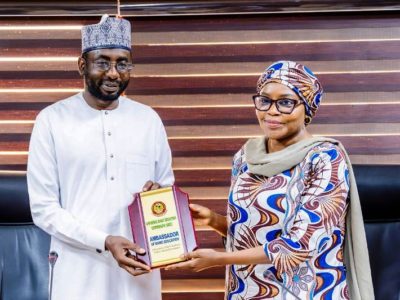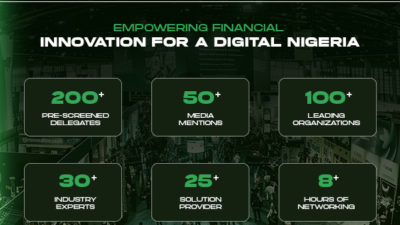Africa bandwidth feast here Last week is particularly an exciting one for Nigeria. Two connectivity sea cables (Glo 1, Main One) were formally launched in the country to begin the start of commercial services in what would radically change the way we connect to ourselves on the continent and the rest of the world. For Africa, the bandwidth famine is over. The communication connectivity feast has begun. The current high cost of connectivity will crash. There will be greater download speed. Most importantly, the vista for multiple services is here.
Historically, Africa lags behind the rest of the world in connectivity. Africa’s connectivity was largely based on the very pricey satellite connections and the only submarine fiber optic cable, SAT-3/WASC/SAFE owned by government telcos who did everything possible to ensure the benefits were never optimized. SAT-3 bandwidth in African countries whether in Nigeria through NITEL or Ghana through GT (Ghana Telecom) came at the price of a piece of the moon. In all the countries that SAT-3 had a landing, telecom services were rendered over 50 times the price you could access the same or better services in Europe and other parts of the world.
But Africa went full circle in the last few years beginning in 2009 to become the hub for various private sector and government backed consortia set up to deliver new submarine cables that will reconfigure the delivery of high quality communications infrastructures. In 2009, the Seacom cable connected eastern and southern Africa with Asia and the TEAMs cable reached Kenya to radically begin to alter the African connectivity landscape. 2009 marked the beginning of the end of the narrow pipes. It also marked the opening of greater possibility for broadband.
Those possibilities are expanding as the sea cables increase. Two more cables, Glo 1 and Main One have joined the fray in Nigeria. Both cables link Africa from the western part of the continent to Europe and the rest of the world. Two more are on the start line already: The Eastern Africa Submarine Cable System (EASSy) and LION bring connectivity to the southern and eastern parts of the continent. The sub-marine fiber optic ring is not complete. Two more, WACS and ACE should join the competition from 2011 to 2012 to redraw Africa’s connectivity map in more exciting ways than once anticipated about 20 years ago.
Main One brings 1.92 terabytes 7400 kilometre long submarine fibre cable system linking West Africa to Europe. It connects more than 10 West African countries and has an ambitiously expansive outlay to run to the southern part of the continent. EASSy runs from ‘Mtunzini in South Africa to Port Sudan in Sudan, with landing points in nine countries, and connected to at least ten landlocked countries – who will no longer have to rely on expensive satellite systems to carry voice and data services.’
The Glo-1 submarine communications cable is no less ambitious and strategic. The cable system runs along the west coast of Africa between Nigeria and the UK connecting about 17 countries; its 10,000 km long coverage with a minimum capacity of 640 Gbit/s has landing points across several West African countries and opens unparallel communication potentials particularly in those countries where Globacom, the owner of Glo-1, is already licensed to provide telecom services.
The ACE (Africa Coast to Europe) submarine cable system is planned to stretch from France to South Africa, connecting all countries along the West coast of Africa. The ACE is planned to stretch beyond 14,000 km and will deliver a minimum capacity of 1.92 Tbit/s. The consortium recently got six new telecommunication operators as joint owners to help expand its fund-portfolio. In the consortium are Etisalat Nigeria, Expresso Telecom Group (Mauritania, Senegal, Ghana, Nigeria), Globalink (Sierra Leone), Mauritius Telecom, Office Congolais de Poste et Télécommunication (Democratic Republic of Congo) and Sierratel (Sierra Leone). The list also include Baharicom Development Company Ltd., supported by the NEPAD’s (New Partnership for Africa’s Development) eAfrica Commission of the African Union, which joined ACE as a major partner in October 2009. These seven join 25 others who originally make up the consortium.
What do all these hold for Africa? Private telecom operators on the continent are increasingly taking full grip of their own destiny. They are building a synergy of participatory ownership in what would help to expand the service window, ginger new levels of co-competition and broaden the scope of Africa’s participation in global communications.
Even more significant is the fate of satellite backbone providers. They will have to seek their fortune elsewhere. The market will shrink for satellite bandwidth as marine cable providers firm up their grip with cheaper and more reliable bandwidth infrastructure. The interior will definitely be the last battle line. But as the tied-in agreements that bring in many landlocked countries in the EASSY consortium indicates, there will be little space for satellite operators to claim the hefty margins they once (and still) claim in Africa’s connectivity market.
However, not many experts share this viewpoint completely. Many are convinced that satellite operators will still have a large chunk of the niche market. Russel Southwood, editor of London based Balancing Acts notes:
“The overall balance of satellite vs fibre use in Africa’s top Sub-Saharan markets 20 markets goes from 45.6% vs 54.4% in 2008 to 11.9% to 88.1% in 2014. Of these top 20 markets, the top 5 markets (South Africa, Nigeria, Kenya, Angola and Sudan) make up the majority of bandwidth demand across the continent and are the countries that will experience the fastest bandwidth growth over the period. So satellite operators and resellers will not only be selling into a smaller share of the overall bandwidth market but will become niche players in many countries. There will be growth but most of it will be on fibre.” But most writers agree that in the years that will follow 2015, satellite operators should expect a shrunk market on the continent.
Broadband will be part of the regular features in Africa’s telecommunication market and this will help drive e-services in virtually all sectors from education, health, agriculture, governance and all what not. The African telecommunications decade is here. Africa will effectively meet its international traffic requirements and also drive local services only conceivable in other continents. Definitely, as many commentators have noted 2009 and 2010 mark an exciting transition for the Internet in Africa. The age of seamless video conferencing between multiple locations; Business Process Outsourcing (BPO); and highly managed data centers connected at different locations across the globe among others is here. In Nigeria, Glo1 and Main One have opened the floodgate of new services for a new decade.




























